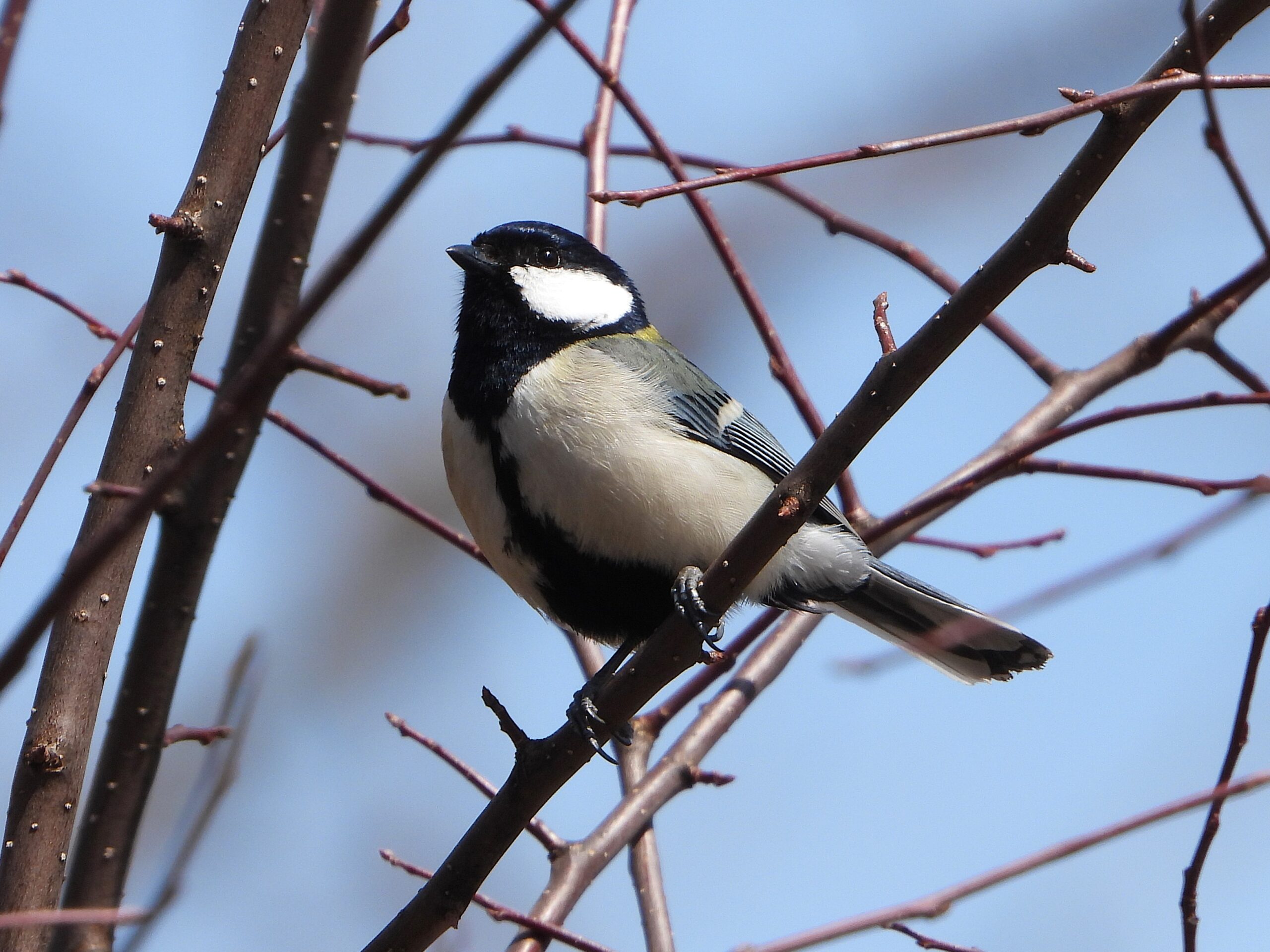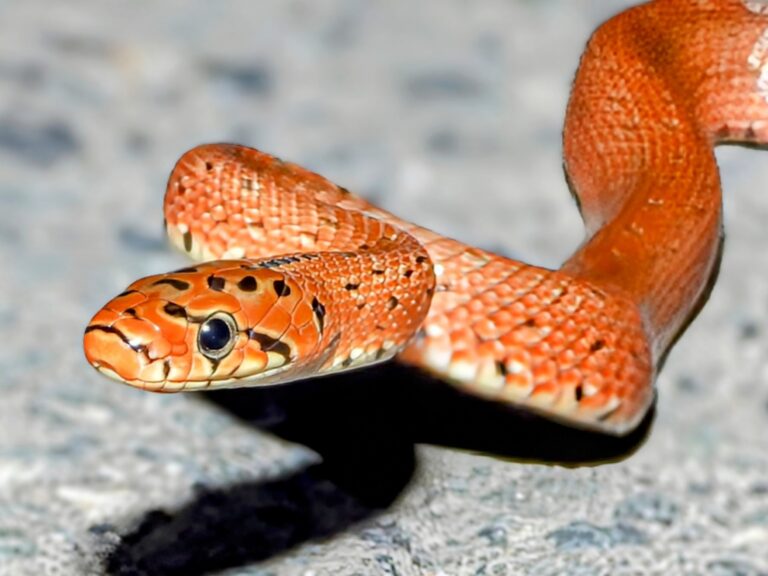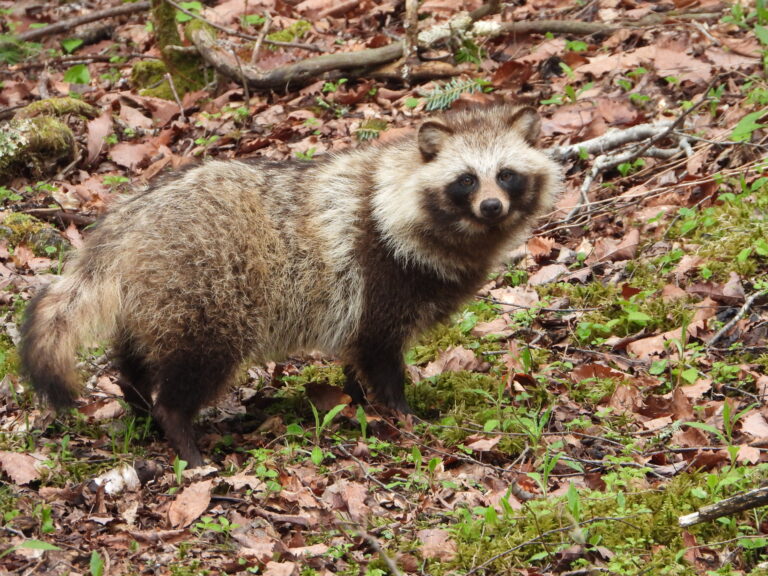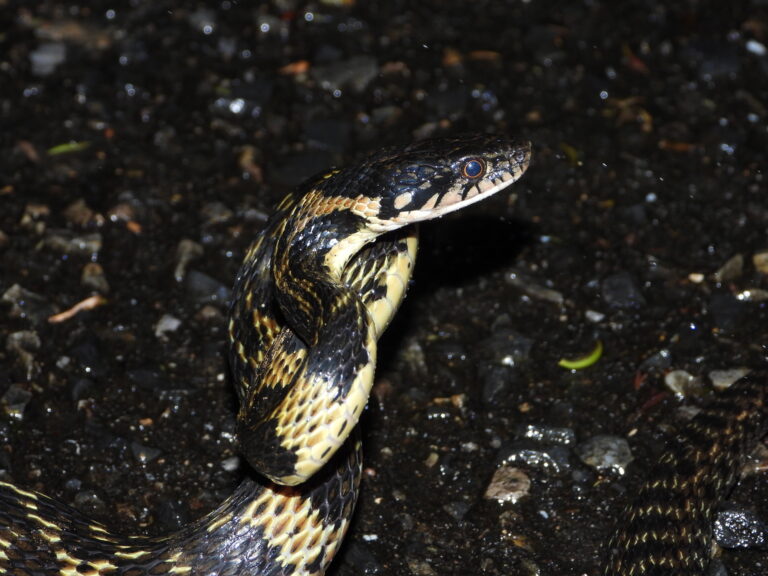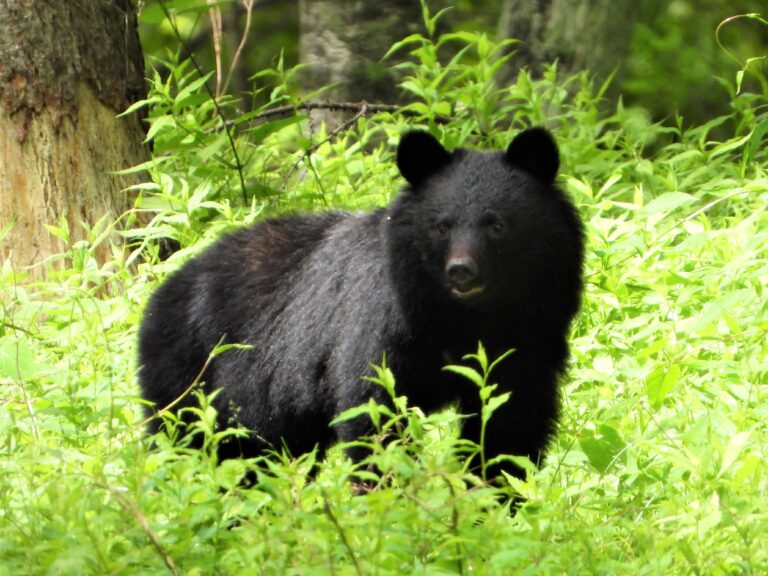Japan’s Mixed-Species Bird Flocks in Winter – Survival Secrets
Introduction
When Japan’s forests fall silent under the chill of winter, a faint chorus of chirps echoes through the bare trees.
Tiny small birds in Japan—tits, nuthatches, and woodpeckers—join forces to endure the season.
In winter, these birds often travel together in winter bird flocks, moving through the forests in lively mixed groups for warmth and safety.
These mixed-species bird flocks in Japan are loose-knit winter alliances that combine sharp eyes, fast wings, and constant calls to find food and avoid predators.
This article introduces the key species that form these bird flocks in Japan and where to see them during the cold months.
Japanese Tit (Parus minor)
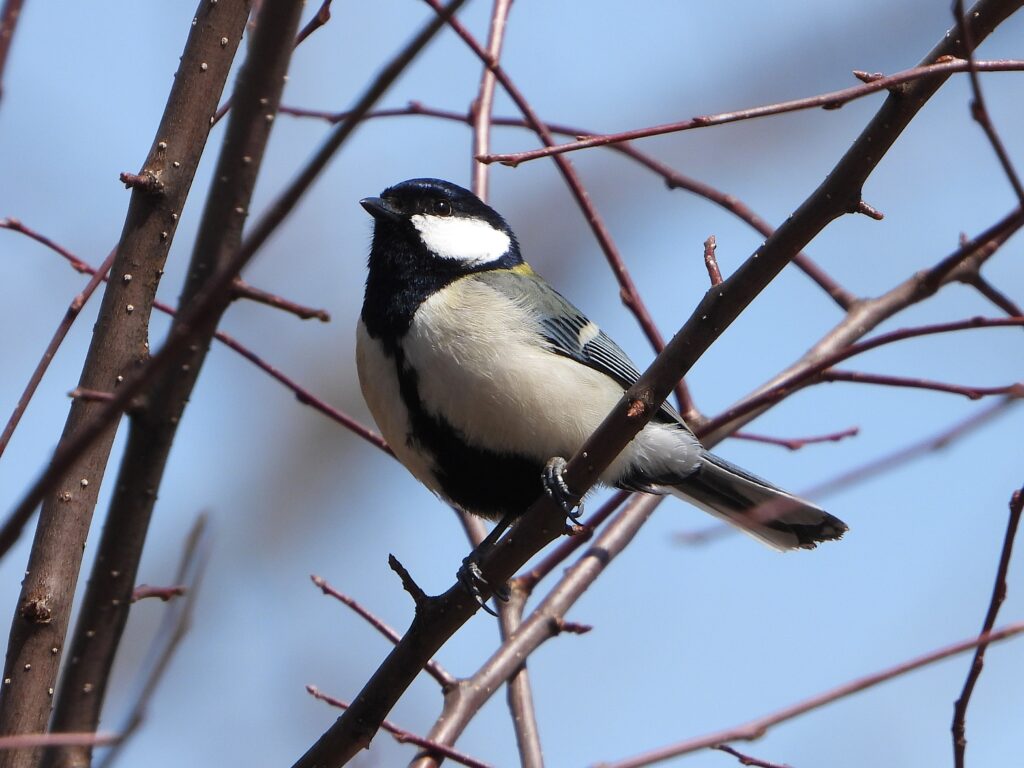
The undisputed leader of most mixed flocks.
Recognizable by its black head and white cheeks, the Japanese Tit coordinates the group through alarm and contact calls.
Where you hear its crisp “chi-bee,” other small birds are usually close behind.
Read the full profile →
Varied Tit (Sittiparus varius)
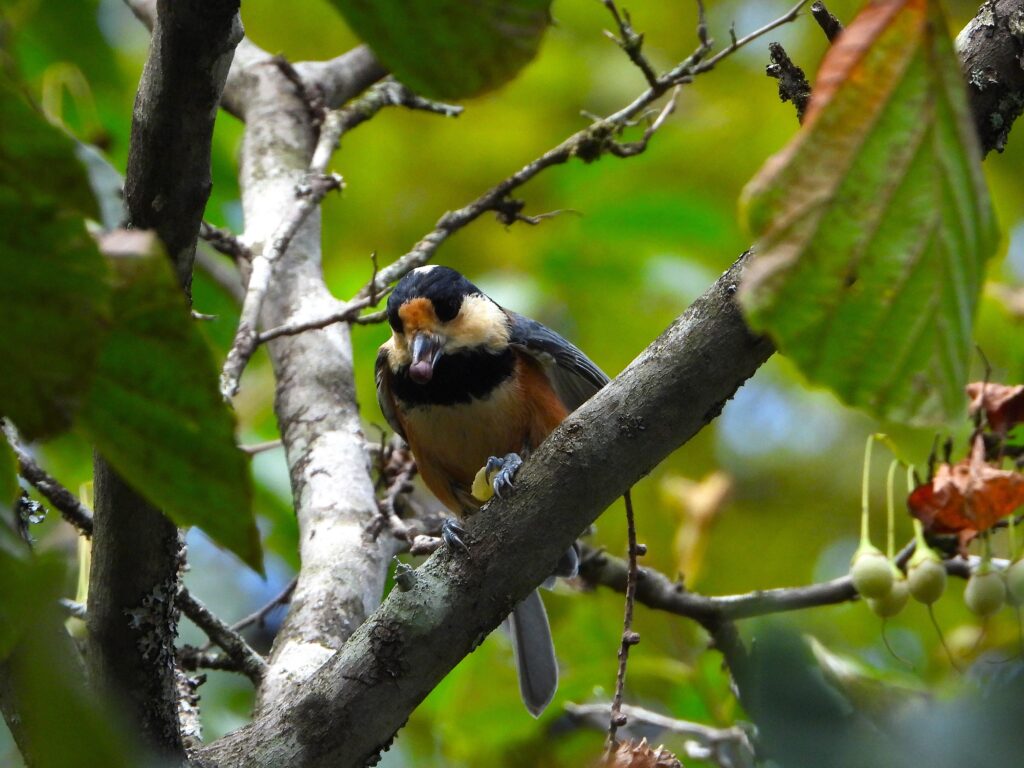
Colorful and bold, the Varied Tit brings a flash of chestnut and white to the winter woods.
It forages energetically on branches and trunks, often caching seeds in bark crevices for later.
Although more independent, it often joins tit-led flocks—adding both color and character to the group.
Read the full profile →
Long-tailed Tit (Aegithalos caudatus japonicus)
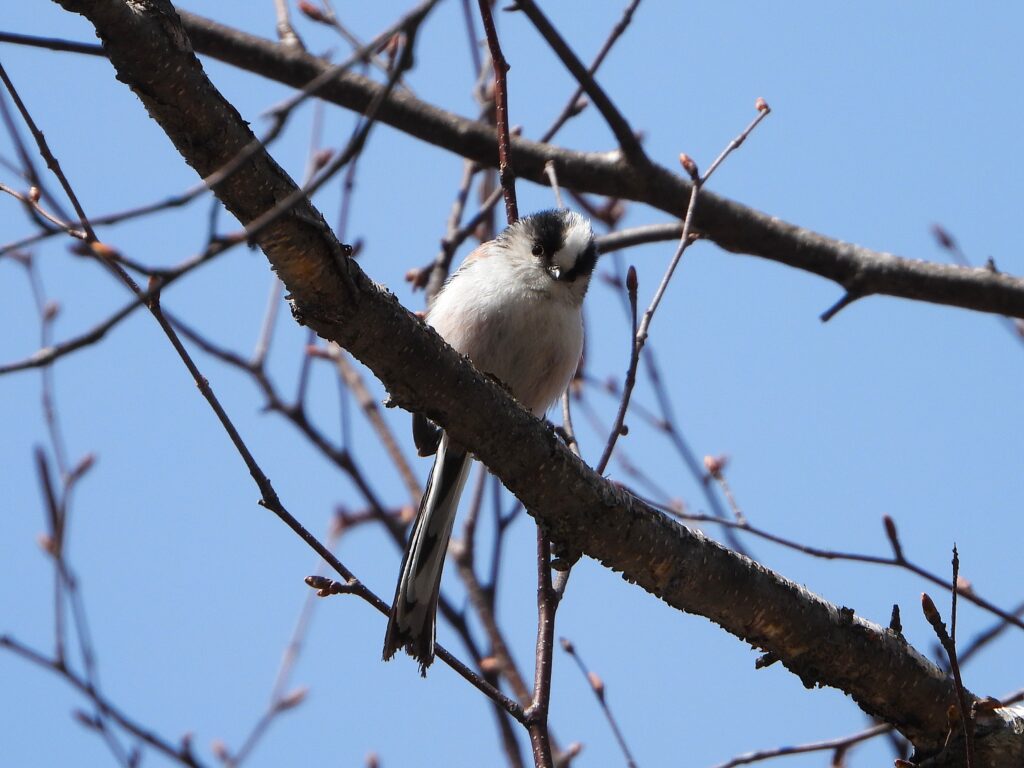
A tiny, round bird with a tail nearly as long as its body—often described as a “snowball with wings.”
Its soft, high “chee-chee” calls keep flocks connected through dense trees.
On freezing nights, they huddle together for warmth—a touching symbol of cooperation.
Read the full profile →
Coal Tit (Periparus ater)
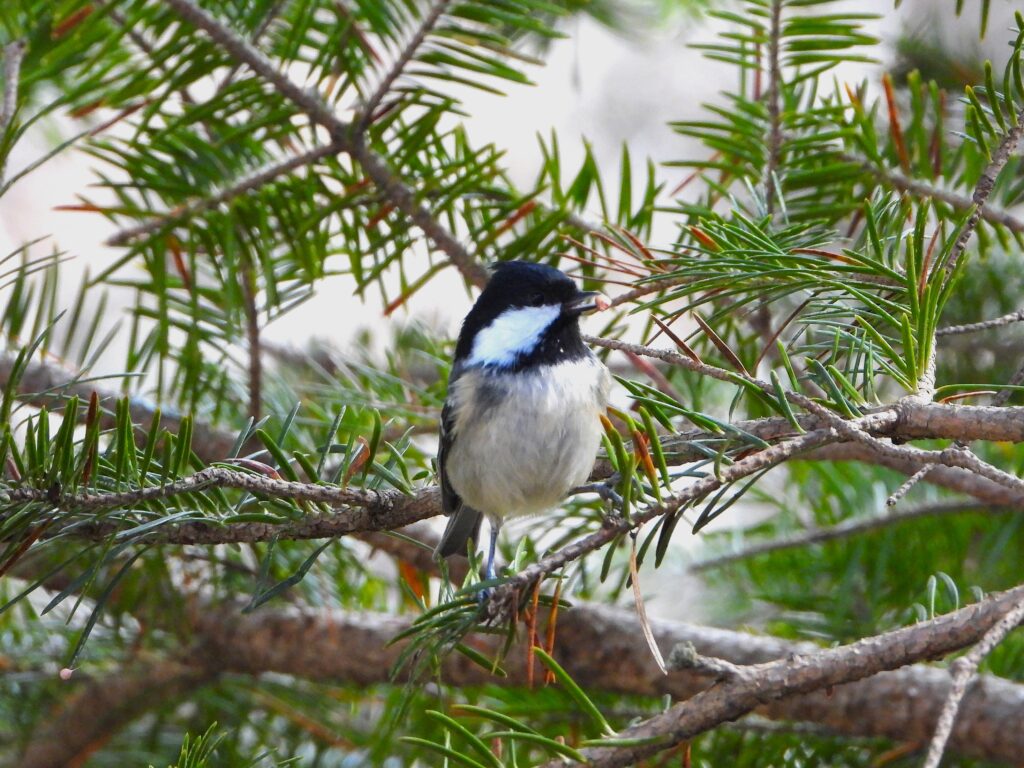
Restless and small, the Coal Tit darts quickly among pine needles and twigs.
It’s a classic follower in mixed flocks, relying on the vigilance of larger species while searching for minute insects and seeds.
Its agility allows it to reach feeding spots that other birds can’t.
Read the full profile →
Eurasian Nuthatch (Sitta europaea)

A trunk specialist that climbs up, down, and sideways with ease.
Using its strong bill, it pries insects from under bark and fills a niche no tit can cover.
Its nasal “nyet” call adds a unique tone to the chorus of a passing flock.
Read the full profile →
Japanese Pygmy Woodpecker (Yungipicus kizuki)
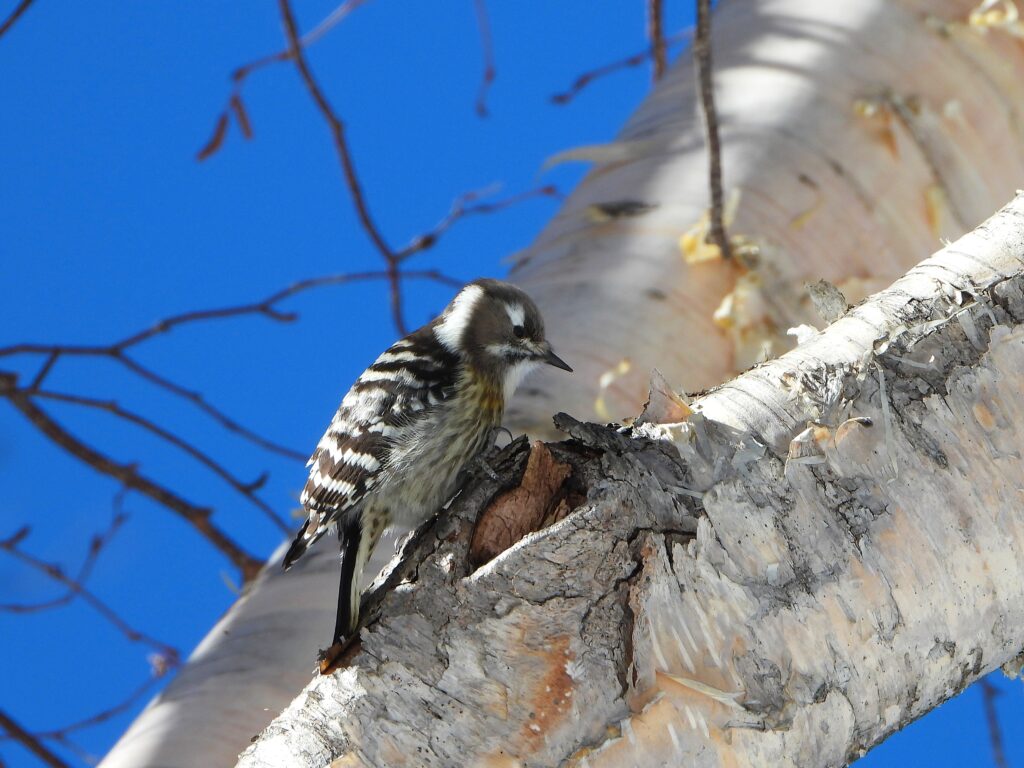
Japan’s smallest woodpecker, often quietly tapping on thin branches.
It’s a regular guest in mixed flocks, searching for tiny larvae and beetles that others might miss.
Sometimes its foraging disturbs hidden insects, giving nearby tits an easy meal.
Read the full profile →
Goldcrest (Regulus regulus japonensis)

Japan’s tiniest bird—just a few grams of life yet endlessly active.
It flits rapidly among conifer needles, feeding on the smallest insects in the coldest places.
In snowy mountain forests, its high-pitched calls often blend into the background hum of a mixed flock.
Read the full profile →
Willow Tit (Poecile montanus)
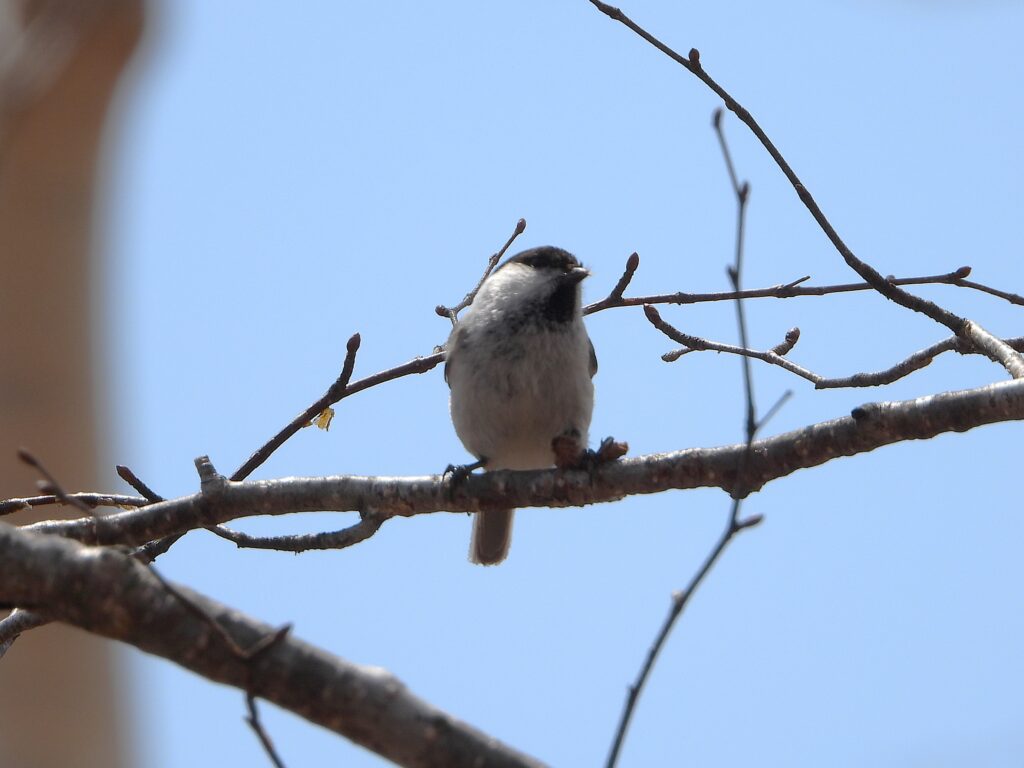
A quiet, soft-voiced member often seen in northern and upland forests.
Its low, buzzing call and steady twig-level foraging make it one of the calmest presences in a busy winter group.
Common in Hokkaido and northern Honshu.
Read the full profile →
How Mixed Flocks Work
A typical mixed-species bird flock in Japan contains 10–40 individuals of several species.
The Japanese Tit usually leads, while others follow at different canopy levels—tits in the mid-layer, nuthatches and woodpeckers on trunks, long-tailed tits at the outer branches.
Each species specializes in its own feeding method, reducing competition while increasing the flock’s overall success.
Many alarm calls are understood across species, allowing the entire group to share vigilance and react instantly to danger.
Where to See in Japan
Mixed-species bird flocks in Japan are easiest to find between November and March in temperate forests and parks.
Look for them in:
- Satoyama woodlands of Honshu and Shikoku
- Forest trails in Nikko, Karuizawa, and Mt. Takao
- Temple groves of Kyoto and Nara
- Snowy birch and conifer forests of Hokkaido
Listen for overlapping quick calls—and watch as the forest suddenly comes alive with small, moving shadows.
Author’s Impression
One cold morning in the hills of Tochigi, I stood still among leafless trees. Suddenly, the silence broke into motion—soft calls, flashes of wings, and a dozen tiny lives working together.
In winter, finding one small bird often means seeing five or more species at once, moving together through the forest.
That brief moment, when the flock passes by, is one of the happiest sights of the season.

